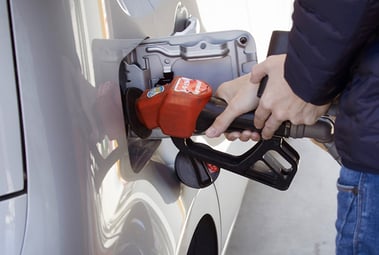One of the most exciting things about data is that it can answer critical questions. Given the considerable costs associated with operating a business, one of the most important questions about your fleet is about ROI: What kind of return are we seeing on the money we spend?
It’s a big question, indeed, especially as the purchase of a single piece of equipment can cost several hundred thousand dollars. And, of course, that one asset will represent just a fraction of the investment required to purchase, operate, and maintain an entire mixed fleet.
Given the importance of fleet ROI, it’s a huge positive that a telematics system can put at your fingertips a wealth of useful data. But that data will only be as helpful as the process you put in place to estimate and maximize your fleet ROI.
Here are five steps to help you make determining fleet ROI a valid and repeatable process.
 Step 1: Pinpoint what you want to measure. As the saying goes, you can’t manage what you don’t measure. While this is undeniably true, it’s also true that it’s impossible to measure everything. You’ll need to identify which ROI-related metrics will be most important for your fleet to improve and limit your focus accordingly. For example, with fuel prices at or near record-high levels, fleet fuel savings is a popular metric, as are other metrics, such as route efficiency, that also are tied to fuel consumption. Pick what you most want to measure and go from there. If it's fuel, then ensure your solution incorporates a fuel management system.
Step 1: Pinpoint what you want to measure. As the saying goes, you can’t manage what you don’t measure. While this is undeniably true, it’s also true that it’s impossible to measure everything. You’ll need to identify which ROI-related metrics will be most important for your fleet to improve and limit your focus accordingly. For example, with fuel prices at or near record-high levels, fleet fuel savings is a popular metric, as are other metrics, such as route efficiency, that also are tied to fuel consumption. Pick what you most want to measure and go from there. If it's fuel, then ensure your solution incorporates a fuel management system.
Step 2: Set baselines and benchmarks. To understand if you are making progress toward a goal, you must know where you started and to what number you are aiming for. Establishing a baseline – your starting point – is a necessary first step. Determining fleet benchmarks, which may be as simple as conducting a Google search, can help you set meaningful goals to which to aspire and gauge your progress along the way.
Step 3: Focus on hard data. Anecdotal data is worthless when it comes to calculating improvements in ROI. Instead, capture hard data. For instance, ASCEND users have reported telematics ROI results that include a 15% reduction in idle time; 37% decrease in speeding events; 40% decrease in incidents of harsh driving; 75% improvement in safety (as measured by reductions in accidents); and 43% reduction in maintenance costs. These are the types of fleet data results that your executive team will be most interested in seeing.
 Step 4: Remember the human factor. Your employees represent your company’s most important investment. They also can have the greatest impact on your efforts to improve measurable ROI for your fleet. That being the case, any new initiative or change in policy or procedure needs to be implemented with your employees, drivers, and fleet in mind. How can you get them to buy in? How can you help them do their part to drive greater ROI from your telematics? For example, introducing gamification by posting a stack-ranked scorecard of driver safety scores can be a fun and motivating way to reinforce your safety program. Gift cards and other perks can also help to promote desired behaviors.
Step 4: Remember the human factor. Your employees represent your company’s most important investment. They also can have the greatest impact on your efforts to improve measurable ROI for your fleet. That being the case, any new initiative or change in policy or procedure needs to be implemented with your employees, drivers, and fleet in mind. How can you get them to buy in? How can you help them do their part to drive greater ROI from your telematics? For example, introducing gamification by posting a stack-ranked scorecard of driver safety scores can be a fun and motivating way to reinforce your safety program. Gift cards and other perks can also help to promote desired behaviors.
Step 5: Never stop measuring! Once you determine where you want to see improvements in ROI from your telematics, and what you want to measure, you need to keep measuring and trust the data. By continuing to inspect and capture fleet and vehicle data, you not only will be able to see improvements or backsteps over a longer period, but you’ll also be able to more accurately spot anomalies and better understand the levers that allow you to positively impact your fleet's ROI.
A Better View
A powerful telematics and data platform will provide many benefits to your business, but the ability to determine fleet ROI might be one of the most important. These five steps can help you get a better handle on costs while you also get a better view of your operations.

